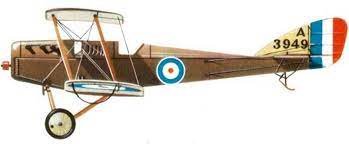Chapter I - In the beginning
The Egyptian Flight 1914-1915
30 Squadron’s long and distinguished history began at Farnborough, England in November 1914. A unit, as then untitled, sailed for Egypt commanded by Major S. D. Massey, accompanied by 3 officers and 37 NCOs and men. Arriving at Alexandria on 17 November, they unloaded 3 Maurice Farman aircraft, collected 2 Henri Farmans from Heliopolis and then established a base at Ismailia where operations began.
The unit, designated 30 Squadron on 24 March 1915, was engaged on reconnaissance duties, patrolling the Sinai desert in search of parties of Turks intent on blowing up the banks of the Suez canal. When discovered, these parties were dispersed by dropping 20lb bombs on them by hand. Thereby, on 27 March 1915, Captain H. Reilly was credited with dropping 30 Squadron’s first bombs, the unfortunate recipient being a Turkish camp at Bir El Mir. Operations in this theatre continued until October 1915 when the Squadron’s aircraft were handed over to 14 Squadron, and its personnel embarked for Mesopotamia.
The Mesopotamian Flight 1915
As early as 1914 the British Government had decided that a campaign had to be launched in Mesopotamia (now Iraq) to prevent the Turks from capturing the Anglo-Persian Oil Company’s wells in Persia. The task fell to the Indian Army, commanded by General Kirkpatrick and one of his first concerns was to provide his force with a flying corps. Captain Reilly (promoted to Major in June) arrived in Mesopotamia from Egypt to take command of the piecemeal unit, which subsequently became ‘A’ Flight of 30 Squadron.
Martinsyde Scout
‘A’ Flight, operating the Farman and Cauldron aircraft performed useful reconnaissance work, photographing and sketching terrain in preparation for further advances. Throughout the summer the ground forces pushed their way along the Tigris to Kut-el-Amara, which was taken on 29 September thanks to the information provided by ‘A’ Flight reconnaissance. The whole area was now in British hands and the oil wells and pipelines were safe.
Having taken Kut, it was decided to advance and capture Baghdad, which was the Army’s main objective. On 6 October Capt Petre, in a Martinsyde Scout, carried out the first reconnaissance of this famous city. A few days later Major Massey arrived with the Egyptian contingent of 30 Squadron and assumed command. For the first time 30Squadron was complete with a Squadron Commander and three flight commanders.
In Chapter 2 we will look at 30 Sqn’s role in the Battle for Kut…
